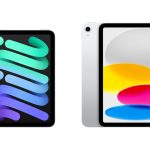Kroger, Target, and Walmart each introduced new initiatives to enable more efficient fulfillment and faster delivery.
Here’s what you need to know:
Kroger unveiled its first customer fulfillment center (CFC) in partnership with retail technology firm Ocado. Located in Monroe, Ohio, the 375,000-square-foot CFC contains more than 1,000 robots that pick, sort, and pack customers’ orders ahead of their delivery times. The facility leverages Ocado’s robotics, artificial intelligence, and automation technology. Ocado plans to open more Kroger CFCs throughout the US and will bring its software solutions to Kroger locations to enhance in-store fulfillment and curbside pickup.
Target is leveraging its tech and delivery firms to test a strategy for optimizing fulfillment and delivery. The new approach is being piloted in Minneapolis, Minnesota, and will begin with in-store Target employees picking and packing orders that are then transferred to a sorting facility throughout the day. From there, Target uses technology from Grand Junction and Deliv to group packages by the most efficient delivery routes, which are then picked up by Shipt workers for same-day delivery.
Insider Intelligence
Walmart invested in self-driving vehicle delivery startup Cruise. The San Francisco-based startup operates a fleet of electric self-driving cars. Walmart began working with Cruise in November when it launched a delivery pilot in Scottsdale, Arizona. The retail giant says its investment in Cruise will help it develop a “fast, low-cost, and scalable” delivery ecosystem.
The pandemic placed greater emphasis on fulfillment and delivery as consumers lean into ecommerce. Last year’s surge in ecommerce put a massive strain on retail logistics systems that were also trying to manage COVID-19 outbreaks with new safety protocols, leading to delivery delays: Amazon, for example, was forced to delay some Prime deliveries for up to a month at the height of the pandemic. This strain led retailers to look for ways to optimize their online fulfillment processes to get orders out to customers faster.
One of the approaches that’s thrived is click-and-collect-which experienced explosive growth last year. It lets brick-and-mortar retailers use their store networks to avoid shipping costs and delays altogether. Across the board, retailers used their network of stores to get orders out to customers faster: 95% of Target’s sales were fulfilled by stores in Q4 2020, for instance.
Recent efforts can help Kroger, Target, and Walmart optimize delivery and fulfillment strategies to better compete with Amazon. Amazon dominates the online shopping market, and a major reason for that is its bulletproof logistics network, which enables quick delivery: 79.8% of internet users said they shop at Amazon because it offers fast and often free delivery, according to a Convey survey.
New initiatives taken up by Kroger, Target, and Walmart will help them build more efficient fulfillment processes that save time and costs while providing customers with faster deliveries. The recent efforts also pose a challenge to Amazon-they point to Kroger, Target, and Walmart moving deeper into its online territory by developing offerings to compete with its delivery capabilities.
- Kroger, Target, and Walmart have all introduced more efficient fulfillment and delivery initiatives.
- These efforts can help the retail giants optimize their strategies to better compete with Amazon.
- Insider Intelligence publishes hundreds of insights, charts, and forecasts on the Payments & Commerce industry. Learn more about becoming a client.
Want to read more stories like this one? Here’s how you can gain access:
- Join other Insider Intelligence clients who receive Payments & Commerce forecasts, briefings, charts, and research reports to their inboxes each day. >> Become a Client
- Explore related topics more in depth. >> Browse Our Coverage
Current subscribers can access the entire Insider Intelligence content archive here.
Powered by WPeMatico






